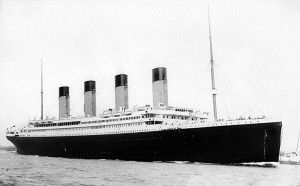This essay was posted last year, removed, and is back with small changes. Enjoy.
I became interested in Beyond Earth Orbit- Human Space Flight by way of a college paper I helped my wife research some years ago. Her project for an ethics class was nuclear weapons. I stumbled upon the book “Project Orion, the true story of the atomic spaceship” by George Dyson and was hooked. I had been a science fiction fan in my youth but like most people I thought space operas were only to be realized in the far future. Project Orion changed my worldview. Since then my made up mind has been unmade several times concerning most of the “common knowledge” floating around about space flight in this 21st century. Much of what is generally believed to be true about our space program is made up of recent hearsay used to hype products that further a business plan. When I read these infomercials endlessly repeated as fact I get pretty upset, mostly because exposing these “facts” as false advertising almost always results in vicious attacks. The private space cult fanatics disgust me and I will not apologize for my hard feelings about these people. They mislead, obfuscate, and insult and dogpile anyone who disagrees with their dogma.
It was a slow step by step process but I came to realize the path to the stars is a narrow one. I found the U.S. space effort, described as being on “the flexible path”, to be going nowhere. There is no Flexible Path. The path to colonizing the solar system is narrow indeed due to the laws of physics and materials science. Science fiction movies have conditioned the public to believe such natural laws can be violated and technology that breaks these laws is possible and immanent. This attitude has led to much waste and many tragedies in the past decades and there is soon to come great disappointment over breakthroughs that are far easier said than done. By way of political contributions and backroom deals, the flexible path scheme came into existence as a way of making money for a small group of investors looking to cash in on public ignorance of technology through influence peddling. It is a convoluted and confusing story and perhaps the best way to make the truth clear is to start at the desired end and work backwards.
If the end goal is new worlds for humankind to inhabit, the earliest practical portrayal of a possible new world was in the 1929 work, “The World, The Flesh, and The Devil”, by socialist John Desmond Bernal. I must say I am no socialist (or capitalist), but I am someone who is often unhappy with people at either end of that spectrum. Space is not about politics- it is about survival. More than just surviving- thriving. Human beings need earth-like conditions to thrive and a artificial hollow moon as described by Bernal can provide those conditions.Though the sphere proposed by Bernal does not address artificial gravity, the hollow sphere concept does, if spun, allow for earth gravity on the inner surface at the equator. Hollow spheres in space can provide habitats for thousands, millions, perhaps even tens of billions of people. Space is big, with quite large quantities of rock floating around and plenty of solar energy waiting to be exploited. And tens of thousands of icy comets. Solar energy and low gravity resources in the asteroid belt mean that building on a much larger scale than we do on earth is practical. While we construct thousand foot supertankers and skyscrapers with some difficulty in earth gravity, the same masses of metal and concrete in space can form a shell many miles in diameter with many times less energy expended.
The most interesting fact of all about Bernal spheres is that building them is not any kind of futuristic science fiction undertaking in terms of materials and engineering. The sphere is the strongest shape and the energy to melt and refine ore and the various rocks and ices are available, and so there are no apparent showstoppers. Fill a Bernal sphere with comet water and air and spin and humankind has created a new world to live in. Enclosed worlds capable of traveling for centuries to other star systems when the time comes. While we have the technology, amazingly, to build such hollow moons right now, we lack only a single medical procedure to allow for star travel- revivable cryopreservation. This one key piece of technology, which also breaks no laws of physics, is all that holds the human race back from colonizing the galaxy. This future is not the hyperspace or warp drive or stargate fantasies the public has in mind. Though slowboats do not lend themselves well to screenplays and formula blockbusters, they are exciting to those who understand what is possible in the near future, in just a matter of decades. But before these new worlds can be manufactured, probably near the end of this century, humankind must first establish an infrastructure in deep space to enable that industry.
To live in space is different than just surviving a visit. Missions based on how much radiation and zero G debilitation a human being can survive are certain to fail. Providing earth radiation levels and gravity is certain to succeed. Radiation is the first killer, and lack of gravity as a debilitator is the second made even worse by the first. To set up an infrastructure that will allow colonies and eventually migration requires spaceships and these radiation and hypogravity hazards cannot be avoided. The only guaranteed shield against the heavy nuclei component of cosmic radiation is mass and distance. The only practical spaceship shielding is 14 or more feet of water. The only way to propel this much mass around the solar system is with nuclear energy. Nuclear activities in earth orbit are not acceptable. Lifting thousands and eventually millions of tons of water into earth orbit are also not plausible. This path of reasoning leads to the moon where nuclear activities are permissible and there is water. The only way to get to the moon is with Heavy Lift Vehicles like the Saturn V and the future SLS. The only way to transport fissionables to the moon safely is with Heavy Lift Vehicles. And this is where the private space agenda rears it’s ugly head. HLV’s and anything needing massive governmental resources, such as nuclear energy, are blasphemy to the private space cult. While their dogma preaches that cheap lift can be had with smaller kerosene rockets with a high launch rate, they go on to enable missions beyond earth orbit by way of fuel depots and transfer in space. For a scientifically ignorant public this all makes sense. But it is the kerosene-hydrogen disconnect that exposes the private space flexible path as a business plan to fool taxpayers into subsidizing a Low Earth Orbit space tourism industry for the ultra-rich.
Liquid hydrogen does not store well and is very difficult to transfer. It is difficult on the ground but in space it has never been done because it is such a nightmare. The entire transfer system and receiving tank have to be pre-cooled with liquid helium and a perfect pre-cool is physically impossible. This generates liquid hydrogen boil-off that must be re-liquified- which generates the exo-thermic form of hydrogen- that generates more boil-off. Compounded by space radiation and zero gravity effects, this is all a real mess that no one wants to talk about. Like radiation shielding, it is a topic avoided by private space advocates to the point of hurling insults. Not only is hydrogen hard to handle on the ground and much harder to deal with in space, an engine burning it requires a turbopump ten times more powerful than one for a kerosene engine. Which is why kerosene is hyped by private space as such a wonderful propellent- because both handling hydrogen and using hydrogen engines is much more expensive and cuts into projected profit margins. So why does the orbital fuel depot and transfer concept specify liquid hydrogen? If kerosene is so much better then why bother with liquid hydrogen in orbital fuel depots? Because there is no substitute for hydrogen Earth Departure Stages when it comes to escaping earth’s gravitational field. Using other propellants multiplies the size of these stages several times. Any human missions Beyond Earth Orbit not using liquid hydrogen Earth Departure Stages look like Battlestar Galactica. Because of the Apollo program and every study done on any BEO missions, private space knows they cannot claim otherwise and get away with it. So private space advocates avoid this subject like the plague. Since it is not practical to store or transfer liquid hydrogen in space a direct launch out of orbit, like the Apollo program, is required. The laws of physics have not changed since the 1960’s. Since the inferior lift vehicles advocated in the flexible path are only capable of boosting a few tons at a time out of orbit, Heavy Lift Vehicles become necessary. Thus, there is no substitute for a HLV with hydrogen upper stages. There is no cheap; space flight is inherently expensive.
The resources necessary to build an infrastructure for BEO-HSF are unavailable to private space. HLV’s sending packaged fissionables to the moon are completely out of reach of “entrepreneurs” claiming the flexible path will open the solar system to colonization. In fact, private space claiming they are the future of space exploration is a lie, a deception being used to acquire taxpayer support for space tourism. Forty years of space stations going in endless circles at very high altitude is a dead end. The space tourism industry wants this truth suppressed and portrays LEO stations as the cutting edge of “exploration.” The justification and source of funding for BEO-HSF is impact defense and survival colonies. The DOD is spending vast treasure on useless cold war toys that guarantee huge profits for the defense industry. Just as the new space movement is all about deception, so the the DOD is guilty of neglecting the most vital mission of the U.S. space program; safeguarding the earth and the human race.






